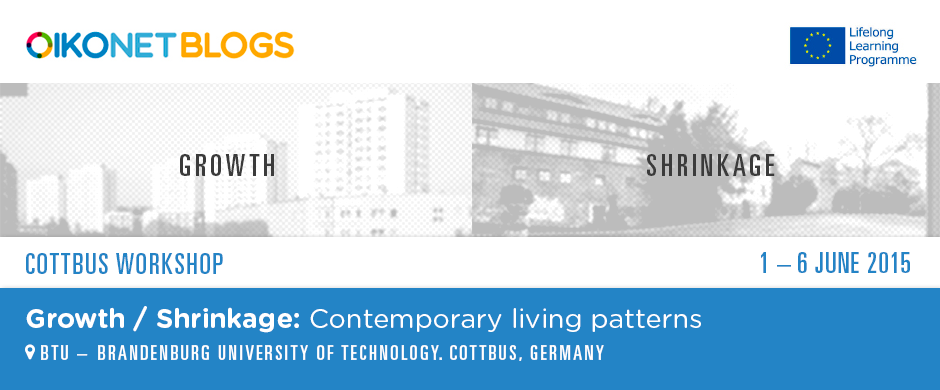The second OIKONET international workshop will explore the complementarity of growing and shrinking, two urban development patterns exemplified by the cities of Berlin and Cottbus, respectively. All over Europe, demographic change has become an undeniable factor for the development perspectives of municipalities. Whereas large metropolises tend to attract new inhabitants, many cities have to realize that growth is something they can no longer rely on. Both growing and shrinking communities are emerging simultaneously confronting cities with unprecedented urban and architectural challenges. While at first sight growth and shrinkage seem to be contrary trends, they have to be considered as two sides of the same coin. The ‘growth paradigm’ must be paralleled by a ‘decline paradigm’ in order to allow us to conceptualize both phenomena and to explore and envision possible futures for cities. Growth usually suggests development and wealth, but this trend presents also a number of urban challenges: How can a city deal with growth in order to maintain adequate living standards and infrastructural supply for its inhabitants? Shrinkage often stands for decline and decay, but it could also be seen as an opportunity for urban renewal. What are then the opportunities of shrinkage and how can a place be downsized without being destroyed? The workshop will focus on the cities of Berlin, the German capital, attractive to global investors and with a growing number of inhabitants, but also affected by housing shortage; and Cottbus, a former industrial city in Eastern Germany, facing a decline of population and economic stagnation. As part of the Brandenburg region, the two cities share a rich history. Despite their geographical proximity, their development and socio-demographic forecasts are far from being similar. Using these two cities as case study, the workshop aims to explore urban and architectural scenarios coping with increasing and decreasing urban density. The workshop program includes lectures, design studio work and site visits to the areas of study. Preparatory learning activities were carried out by participants prior to the meeting in Cottbus. Around fifty students and twenty-five faculty members from the fifteen schools of architecture and urban planning members of OIKONET participated.
Friday 31 July 2015
Monday 6 July 2015
Group 10: Proposal Description
How to make Cottbus unique?
Recycle the centre
Densification by demolition
Creating a new line between Cottbus and Berlin
Cheap office space for young entrepreneurs
Group 9: Proposal Description
From an Industrial City to a University City
Main goal?
Bring students to Cottbus.
How?
Through a bigger and better university, sports, culture, social life, good
environment, meeting points, getting a job.
Group 8: Proposal Description
The project focuses on transforming the existing infrastructure
and abandoned industrial units and housing blocks to create multipurpose
buildings. We are using the railway system to create a connection between the
lake and the city. Agriculture is also used to connect suburban development by
providing green areas that enables them to manufacture good for supply and
distribution.
Group 7: Proposal Description
Strategies:
The river as a connection between the inner city and the
lake
The river as a journey
The river as a place for activities
The river as a dynamic centre for social interaction
The river as a tool to keep the city compactness.
Group 6: Proposal Description
Concept:
River/ Connector of Berlin
Regenerating the living of river
Lose the densification of the centre of the city by
spreading the population across the river
Avoid the occupation of the green spaces in the city
Group 5: Proposal Description
The concept of dealing with the growth and density in Berlin is to look at the amount of public green areas and private courtyards. Here our solution is to open up the enclosed building. Then the private courtyards can be used by the public. During the day they would be used by workers, visitors and other, and later by the residents when coming home from work. Thereby the areas are used more efficiently through the day. That leaves the big former big green areas suitable for new housing. To make these new public and shared areas there will be needed a improvement of the traffic.
Subscribe to:
Posts (Atom)

